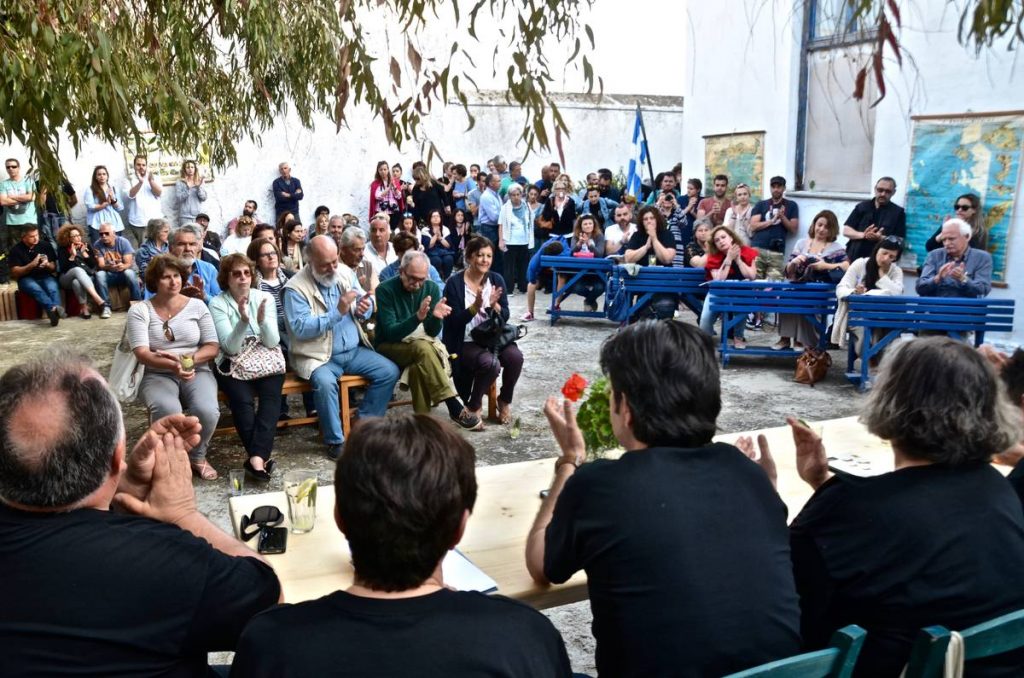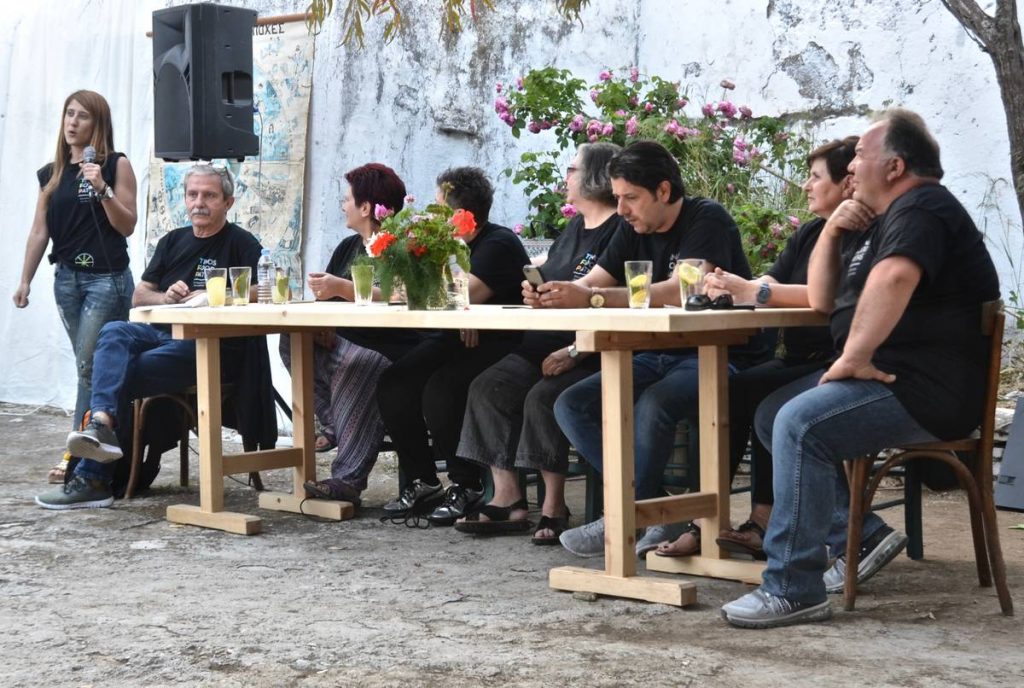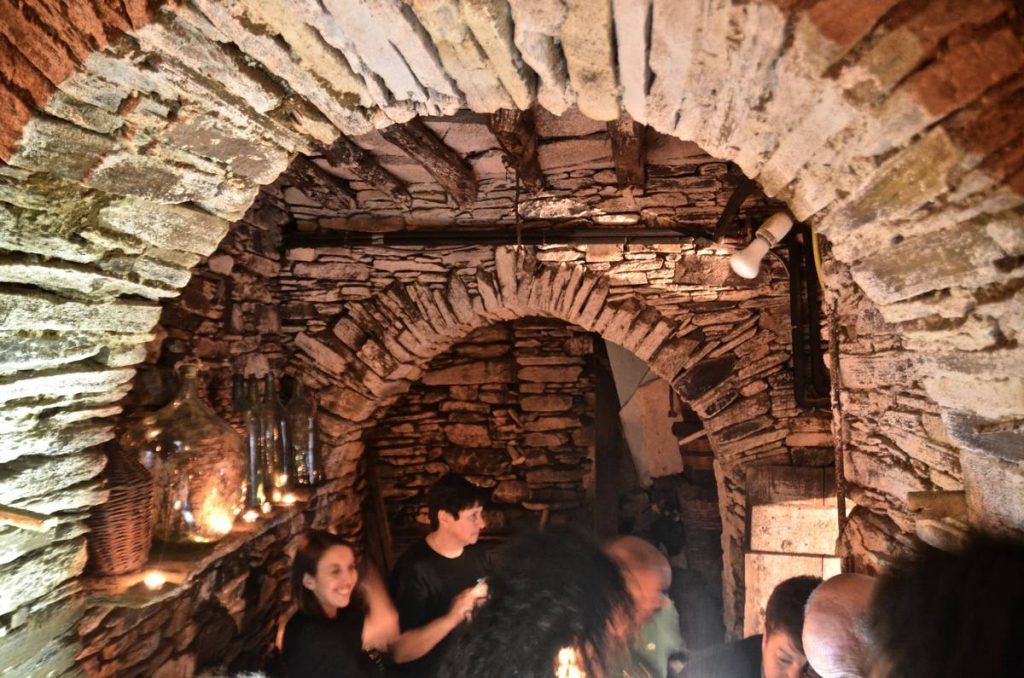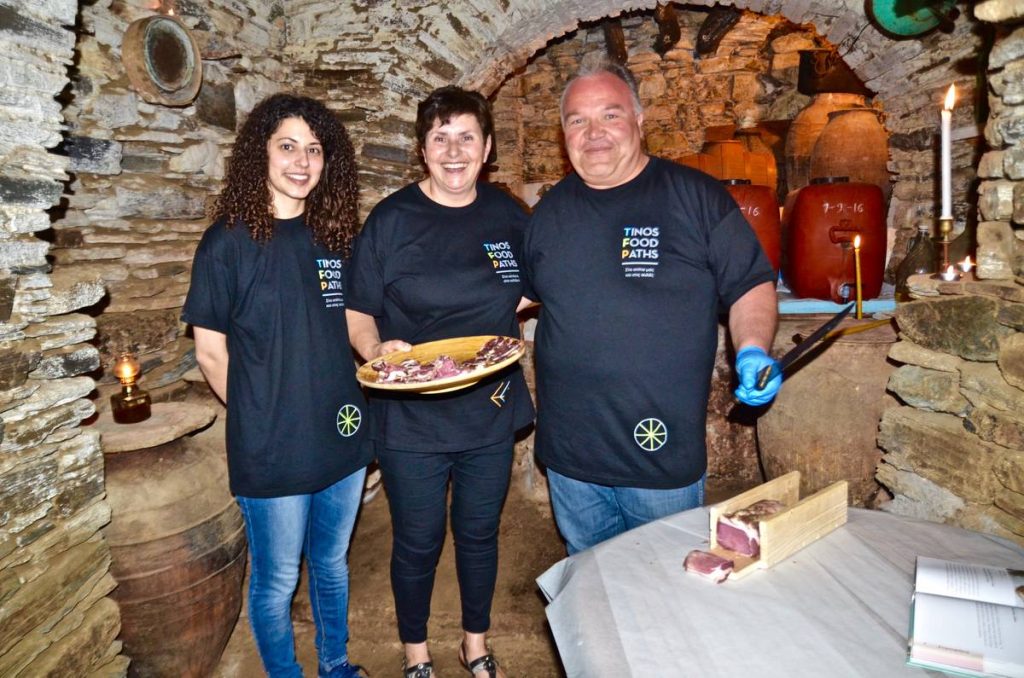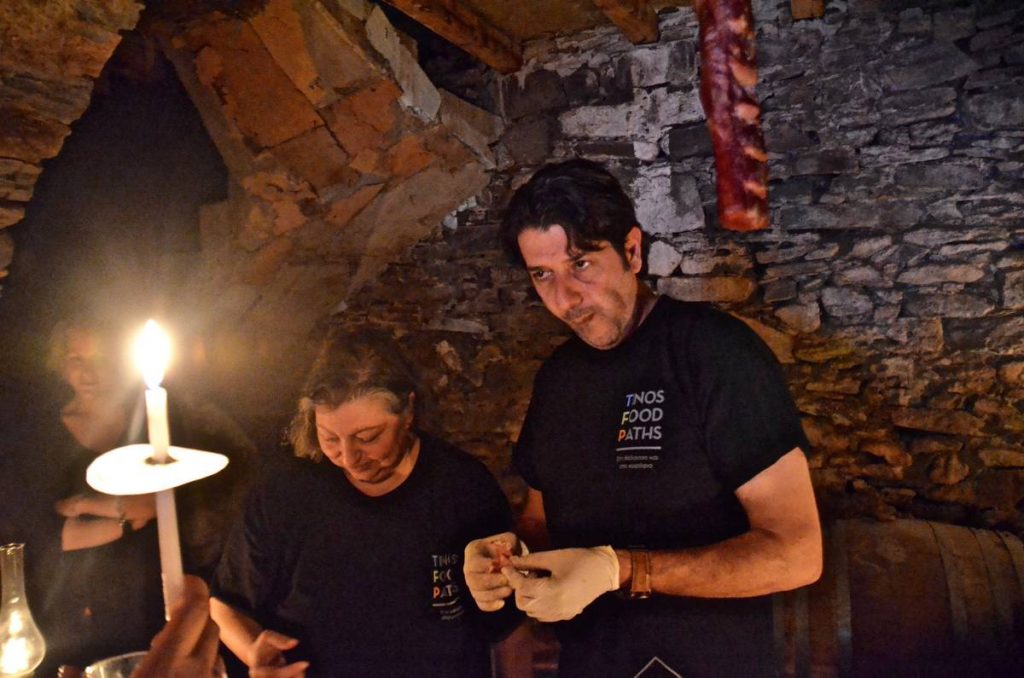At magic maze of Tripotamos continued the miracle of Tinos food paths. Full of anticipation and curiosity we arrived on the island again this year to watch the events and happenings of this wonderful group of professionals from Tinos who surprised the past years the gastronomic - and not only - world of our country. How could this year's events reach the height of last year that had reached perfection? In Tripotamos we got the first answer.
Tripotamos is only 5 km from the town of Tinos, has on its northern back the bare rock of Exombourg and looks through an opening view of the monastery of Agia Pelagia and neighboring Delos. Tripotamos has one labyrinthine structure, with its streets and alleys intertwined with each other under arcades and shady arches, between courtyards and wide terraces without intermediate gaps. An anarchic architecture at first glance, far from hippopotamus space organization systems, but finally with a building system that creates an idiosyncratic castle.
In this labyrinth they decided to present one of their events this year. The materials of "Children" more or less known. Original flavors, playful mood, directions and scenography with references to myths, familiar representations and symbolism, high graphic approach, teamwork, inexhaustible fun.
After getting lost for a while in the alleys and admiring the houses, the terraces, the walk and the dozens of galleries, we arrived at the school where the presentation of Cycladic cold cuts and especially louzas. This time the "children" -I like to say them like that- of Tinos Food Paths the neighboring islands were included in the event. Other children of the Cyclades were also involved. It was not enough for them that many Cycladic people, lovers of gastronomy came to watch them, but they integrated them, gave them roles, took them hand in hand to show them how collectives are built and how miracles happen!
The first act of the play "Cycladic louzes" was played at the Primary School of Tripotamos - which has been operating for 25 years. They sat us on the desks - in fact some of them were from the old days - and representatives of our islands talked about their baths. For the materials and the way of production. Correlations, similarities but also differences that come from the particularities of each place. Cyclades single space, but also so different!
From the others of the Homeric era, the Byzantine apoktin and the Venetian lonza, we reach the louza of the Cyclades, the apaki of Crete, the apokht of Santorini, the noumboulo of Corfu. Loans and counter-loans with neighbors. Processes that take years and centuries to complete. The usual cultural dalavers.
After the theory, we moved on to the practical proofs and the experiential experiences! The second act of the project included our visit to the "katogia". In four categories, the representatives of each island had settled where we would try their baths and comment on our impressions. The finding was magical because on the one hand you entered the most private spaces of the houses of Tripotamos -because the living room of a house, you can visit it, the cellar and the warehouses very difficult- on the other hand because these spaces have not been modernized (plastering- new floors) refer you to medieval times and of course it is the heart of the gastronomy of every household, the place where the efforts of the year are "stored". Oil jars, wine barrels, food, farm tools, lanterns for storing cheese and cold cuts.
Well-built dry stone, fireplaces, ovens, barrels, soil pressed for flooring, walk, wooden beams that hold the ceiling and of course the marble carved lintels, plain lace that let a magical light pass! The process of moving from one floor to another - which were quite far apart, walking between the alleys - involved another directorial finding.
They gave us big candles, with which we could illuminate the places we would visit, a fact that caused even greater emotional tension. With greater reverence and devotion, we approached the spaces, while the resurrection of the atmosphere why not symbolize the Resurrection of Cycladic gastronomy?
In below Syros Maria Diakatou served us the louza of Tinos (sirloin, salted with protagonists the spices nailed to the meat, such as cloves, cinnamon and allspice).
In below Mykonos Dimitris Rousounelos and Andzi Kalogeropoulou offered two Mykonian baths, one traditional and one more modern. Both, however, belonged to the "school of Mykonos". Contra fillet, salting and then sprinkling with cloves, oregano and spices. For everything else, the man of Mykonos cleans during the two-month drying.
Η team of Tinos led by Nikoleta Delatola Foskolou and Louza Tinos that in addition to spices and cinnamon, its production includes immersion in red wine.
In below Andros Dimitris Giginis and Katerina Remoundou served us the louza of Andros. Here louza does not have many spices and its peculiarity lies in its light smoking in olive and cypress woods.
In order not to be complained about, the other islands were also served samples from the Santorini aphti, the Cypriot louza, the Corfiot noumboulo and the apaki of Crete cold cuts, which were presented with the theoretical and practical diligence of Nana Darioti. All this wonderful series of island sausages -but unknown to many- declared its presence and will obviously play its role in shaping local cuisines.
The third act included lessons on marrying louza with caramelized onions. The perpetrator is Grigoris Helmis under the bright support of Dimitris Rousounelos.
The fourth act was about meeting everyone on a plateau where we tried many appetizers starring louzes. The test was the occasion to discuss, to sing, to dance, to show our joy and to realize what we participated in and it shocked us.
Instead of an epilogue
At one point I wondered what power created all this. What power united the "kids" of Tinos Food Paths and to continue to collaborate, create and open our eyes. What was it that created all this mobilization, participation, involvement. I tried to interpret the miracle! And since I know very well that rational thought kills the miracle…!
And yet, while searching here and there, I found the peculiarity of the social relations of the inhabitants of Tinos, who still maintain customs of communism and which in most parts of Greece have disappeared. As tthe custom of "Kavos", for example, which takes place at Christmas and New Year, where the "leaders" of each family in the village gather at their large festive table and discuss the issues and needs of the village.
Maybe this also contributes, as well as the acclimatization of the Tinians to coexist and respect their differences (coexistence of Catholics with Orthodox).
But again I went to interpret one miracle with another!




